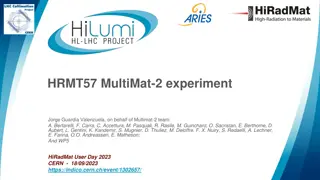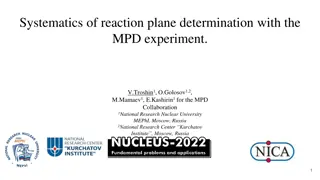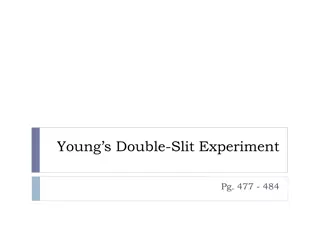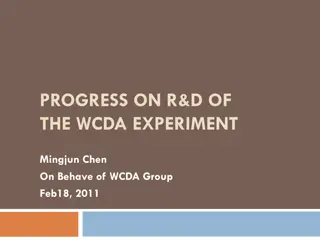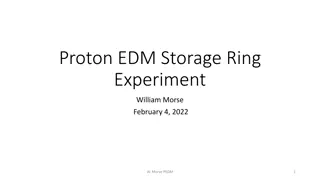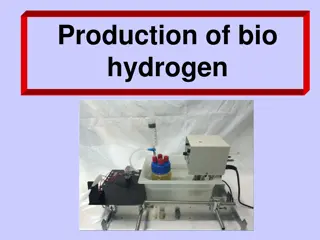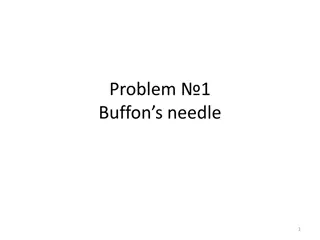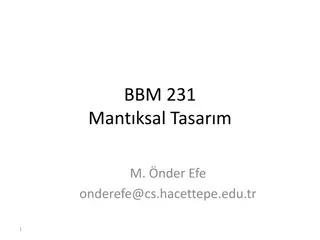
Mercurimetric Determination of Blood or Urine Chloride - Procedure & Calculation
Learn about the mercurimetric determination of blood or urine chloride through a detailed procedure and calculation method. Understand how chlorides are titrated with mercuric nitrate solution and the use of indicators for endpoint detection. Reagents, standardization process, and step-by-step instructions are provided for accurate chloride determination in serum samples.
Download Presentation

Please find below an Image/Link to download the presentation.
The content on the website is provided AS IS for your information and personal use only. It may not be sold, licensed, or shared on other websites without obtaining consent from the author. If you encounter any issues during the download, it is possible that the publisher has removed the file from their server.
You are allowed to download the files provided on this website for personal or commercial use, subject to the condition that they are used lawfully. All files are the property of their respective owners.
The content on the website is provided AS IS for your information and personal use only. It may not be sold, licensed, or shared on other websites without obtaining consent from the author.
E N D
Presentation Transcript
Mercurimetric Mercurimetric Determination of Blood Determination of Blood or Urine Chloride or Urine Chloride Principle: *Chloride ions in a serum or urine sample are titrated with a standardized mercuric nitrate solution. *Mercuric ions combine with chloride ions to form a soluble HgCL2 (Mercury(II) chloride )complex. *The appearance of a violet-blue color produced by diphenyl carbazone indicator is used as the end point.
(mercuric ions combine with diphenyl carbazone to form a violet colored complex). *The dissociation constant for HgCL2 is smaller than the dissociation constant for the Hg-diphenyl carbazone complex, so all the chloride ions must be complexed before the mercuric ions complex with diphenyl carbazone. *The mercuric nitrate solution is standardized by titrating against a standard solution of NaCL.
Reagent: 1-0.0009 M mercuric nitrate in 0.04 M HNO3 = Hg(NO3)2. 2-Diphenylcarbazone (indicator). 3-0.01 M NaCL. 4-10% Na2WO4 solution (Sodium Tungstate). 5-H2SO4 (Sulfuric Acid).
Procedure: I)Standardization of Hg(NO3)2: 1- 2 ml NaCL 2- 4 drops indicator 3- Titrate with Hg(NO3)2 until get faint purple color (end point).
II)Determination of Chloride in Serum: a) 1- 0.5 ml serum 2- 3.5 ml H2O 3- 0.5 ml Na2WO4 4- 0.5 ml H2SO4 5-Centrifuged then filtered to get Protein free filtrate (un known).
b) Dilute the unknown (1:10) 1 ml unknown + 9 ml distal water c) 2 ml dilute unknown 4 drops indicator Titrate with Hg(NO3)2 until get faint purple color
Calculation: A) calculate the concentration of Hg(NO3)2 NaCL + Hg(NO3)2 2 HgCL+ Na(NO3)2 M NaCL x V NaCL = 2 ( M Hg x V Hg ) 0.01 x 2 = 2 ( MHg x 13.2 ) MHg = 0.00076 M
b)calculate the concentration of chloride MCL x VCL = 2( MHg x VHg ) MCL x 0.2 = 2( 0.00076 x 5.7 ) MCL = 0.04332 M

